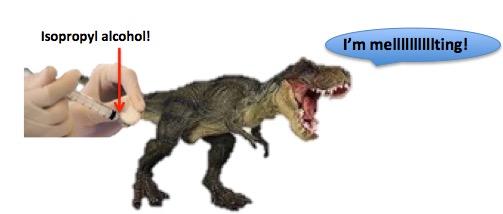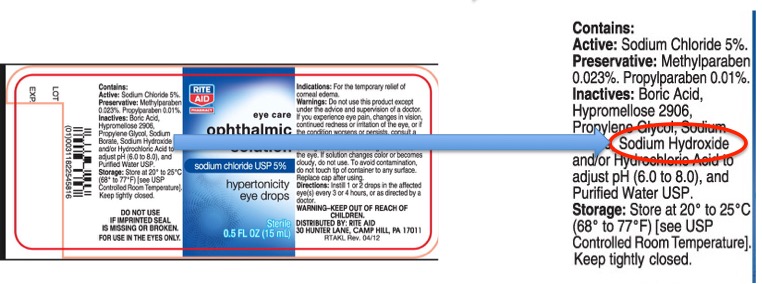The chemophobia-for-profit crowd has a very good trick up its sleeve and it is played constantly. Because it works. Let's say that the NRDC and its sycophants decide that Chemical A is all of a sudden dangerous. Whether it has been used for 60 years and no one has been harmed by it is irrelevant. After all, we all have to make a living, right?
Here's the trick.
- Pick out a chemical that you want to target for whatever reason.
- That reason is money.
- Now go and find a bunch of icky sounding things that the chemical is used for.
- The ickier the better.
- The icky things will sound doubly icky if you can claim that they're used in food.
- Put out a press release.
- Repeat as necessary.
The "this is used in X and it's in your Y" routine is the best con game in town. Because it is impossible to run out of X and Y. Job security for history majors!

Photo: Amazon.com
THE BIG LIE
The quintessential example of the X-Y game comes to us courtesy of Vani Hari, aka the Food Babe, whose scientific credentials are too numerous to list - on a carbon nanoparticle.
"Azodicarbonamide is a yellow orangish powder, more commonly used commercially in the creation of foamed plastics – like yoga mats, shoe soles, floor mats and window gaskets."
Vani Hari (The Food Babe), "Are You Eating This Ingredient Banned All Over The World?"
I took this silliness apart back in 2014 when I was writing for Science 2.0 (See The Food Babe Hath Spoken, And Subway Bread Will Still Suck).
Then there's this:
You might think because of its widespread use that isopropyl alcohol is safe. In reality, this petroleum-derived substance is the same chemical used in antifreeze and as a solvent in shellac.
Isopropyl alcohol is rubbing alcohol. It has been used for a bazillion years to disinfect your skin before an injection. This is going to harm you???? Or perhaps there is something I'm not aware of. Like this...

The real reason that dinosaurs became extinct. Photos - ColonelPickles.com, Ausmed.com
And this...
"Some e-cigarettes contain formaldehyde, the same chemical used in building materials and anti-freeze."
Splendid logic except for the fact that most people do not smoke building materials and anti-freeze.
Saving the best for last...
The active ingredient in MiraLAX is polyethylene glycol 3350 or PEG. PEG is an osmotic laxative and draws water into the bowel. It relieves constipation by producing a watery, rather than formed, bowel movement. It is the same chemical used in wood treatments, paints, rubber, textiles, coatings, detergents and toilet-bowl cleaners.
MiraLAX is one of the preps used for colonoscopy. It is quite safe and reliable. But the same cannot be said for Natural Health 365:

Source: Media Bias Health Check
It would seem that the fine people over at 365 are full of, uh, ya know, the same thing the Miralax is trying to get rid of. So it cannot be a surprise that on the Media Bias Health Check website you'll see this:
Natural Health 365 is a health news and opinion website that is very heavy on pseudoscience. Natural Health 365 promotes miracle cures through food and herbs, anti-vaccination propaganda, GMO fear promotion and big pharma conspiracies. Overall, this is a health and nutrition website that promotes quackery. (D. Van Zandt 8/22/2017)
Woohoo! These guys are Joe Mercola on steroids!
WHY YOU ARE PUTTING DRANO IN YOUR EYE
Sodium hydroxide, aka lye, is the main ingredient in Drano. It will cheerfully eat your skin, turning it into soap (1). So, if chemicals are bad because they are used for other nasty sounding purposes, then please explain the following. Here are the two active ingredients in your typical drain opener (2): sodium hydroxide (lye) and sodium hypochlorite (bleach) (3).

So, why is the following OK? Sodium hydroxide in eye drops? What are we not all blind?

If I'm a writer for NRDC, which about as likely as the Knicks winning the NBA championship, I'd be technically correct if I wrote: "your eye drops contain the same chemical that is used to unclog drains." This is no different than what the scaremongers above are doing.
It's clear that eye drops are not going to eat your eyeballs, so what is sodium hydroxide doing in there? Very simple - it is used to adjust the pH of the eye drop solution so that it is not too acidic, which would make the drops irritating to the eye. The sodium hydroxide is being used for a different purpose and at a very different concentration in each case. Conversely, eye drops unclog your sink. Same reason.
Sodium hydroxide is neither good nor bad for you. Listening to know-nothing organizations and Internet hucksters? That's bad for you.
LESSONS LEARNED
- The fact that a chemical which is found in or added to food, cosmetics, shampoo... is used for certain purposes tells us nothing about whether it is a hazard when used for other purposes.
- The fact that a chemical which is found in or added to food, cosmetics, shampoo... is used to manufacture something else also tells us nothing about whether it's a hazard in that product.
- When you see "X is used for Y" it's a pretty sure bet that it has been written by a numbskull or manipulator.
- Perhaps one of these days people will figure this out.
- Nah.
NOTES:
(1) Soaps are simply a sodium salt of long chain fatty acids. They can be easily made by reacting fats and oils (including the ones in your skin) with sodium hydroxide. You may have done this experiment in chemistry class using lard. No, NRDC - not you guys.
(2) Drano also adds a couple of other things, but it's the sodium hydroxide and sodium hypochlorite that do the job. Without these, they'd have to rename the product Drain-No.
(3) The title of this thing is not strictly correct. Eye drops contain sodium hydroxide but not bleach. But bleach would also be perfectly safe if used at an extremely low concentration (NO- do not try this!), just like chlorine in a pool. Toxicity is all about dose. It always is.




